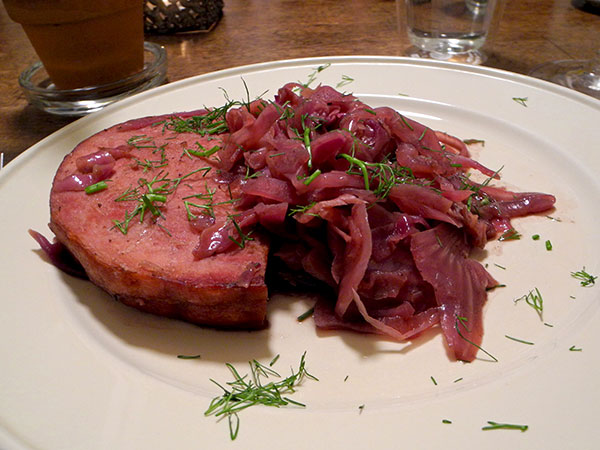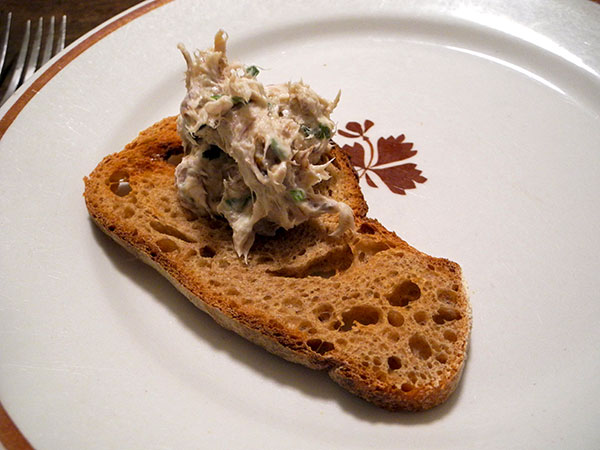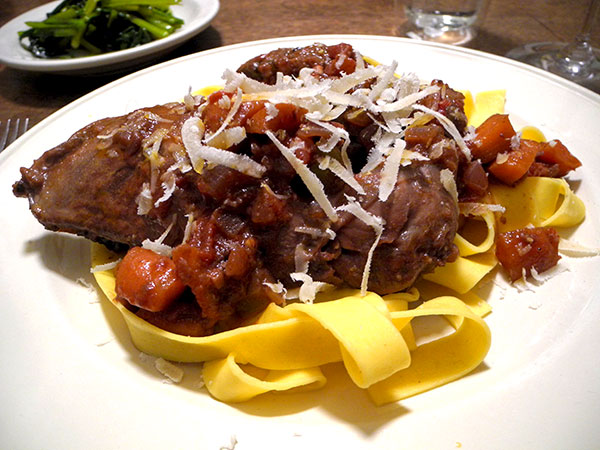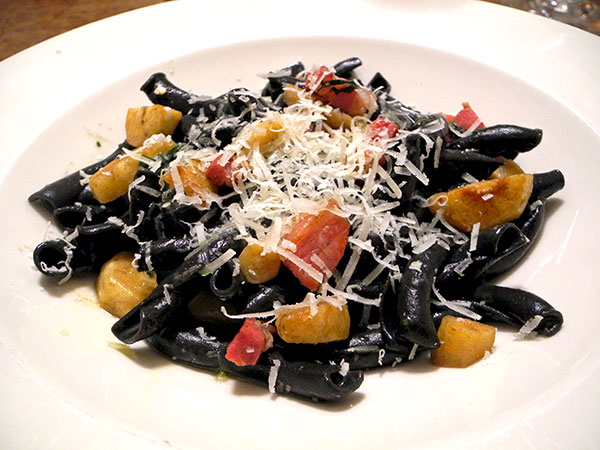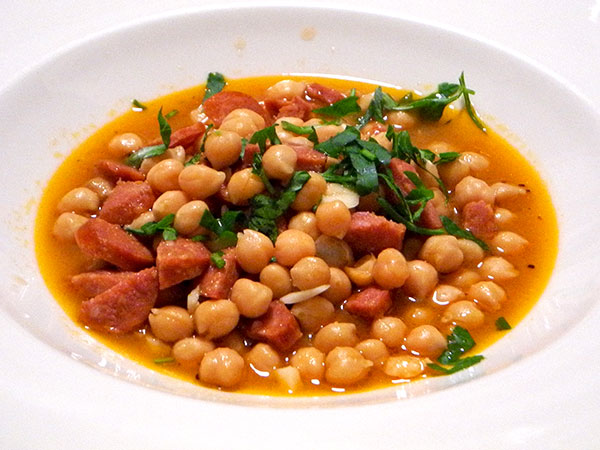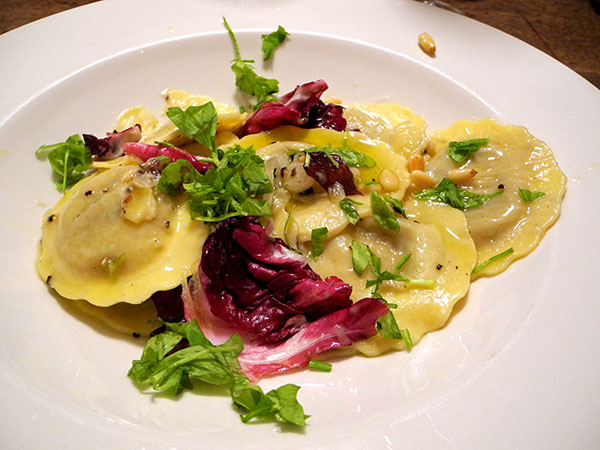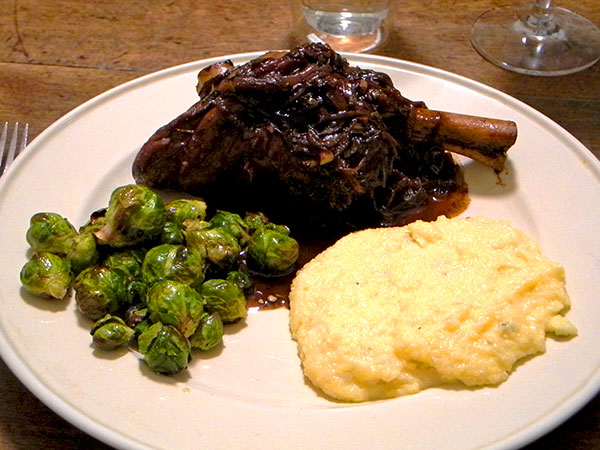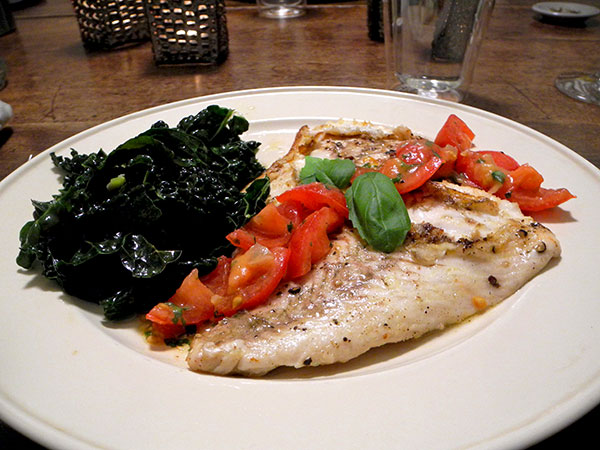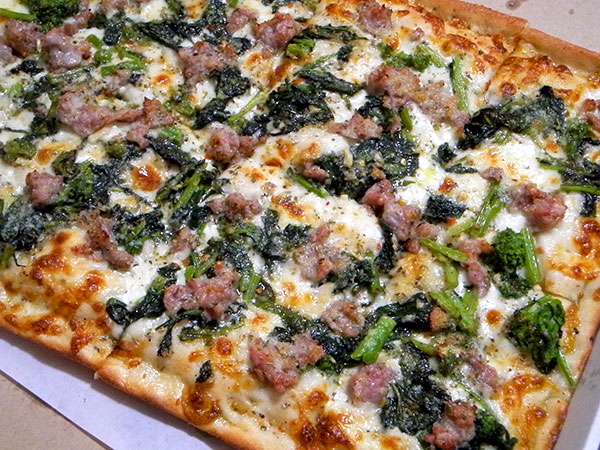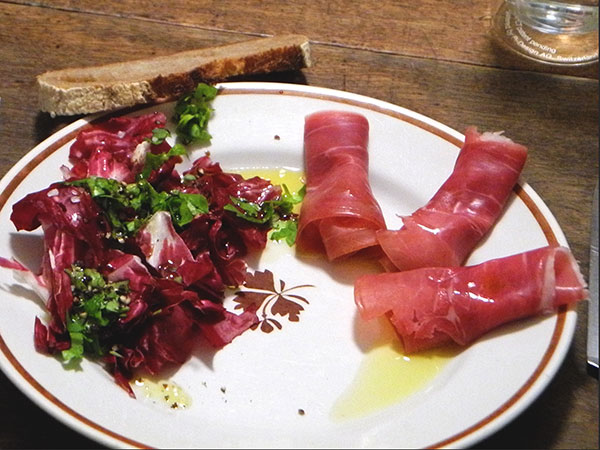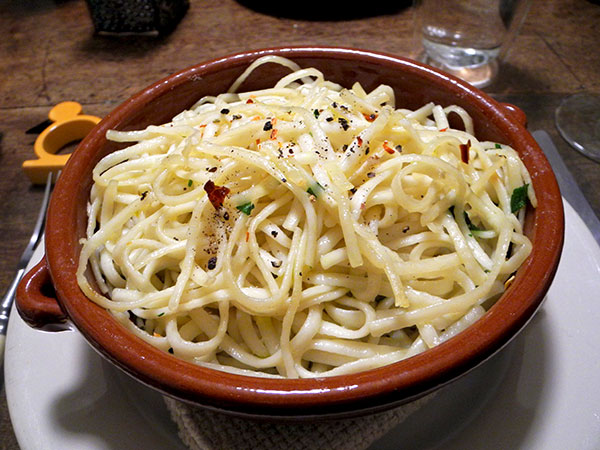Both Barry and I have a soft spot for good traditional German cooking. My own obsession goes back to 1961, and my first trip to Germany, although much later I realized that I had actually grown up with it by way of my mother’s cookery, which was a combination of Franconian tradtions and an enlightened modern American kitchen.
This particular meal employed the simplest preparation of a smoked pork ‘steak’, purchased in our local greenmarket from an Amish* farm in Pennsylvania, and an extraordinarily delicious red cabbage grown in Vermont, also picked up in the greenmarket. I had never used this particular recipe, from Bon Appétit I found on line some years back, and it’s not entirely German (I mean, fennel and balsamic vinegar?), but the dish was very quick to assemble, incredibly delicious, and, in the end, pretty German after all.
The wine was absolutely wonderful, and a perfect accompaniment to the meal; it was what I dream of finding in German wine pairing. My excitement was probably not unrelated to the fact that the fruity and slaty riesling originated in a vineyard not that far from my father’s family’s family’s Heimat southwest of Trier, on the Saar. We don’t know where we had purchased the bottle, but we know we had had it for several years. I’m hoping that we can find its equivalent again, and that it wasn’t just the extra bottle aging in the wine rack inside our apartment that made it taste so good.
- a smoked ham slice from Millport Dairy, dried, then seared in butter and olive oil before being buried for fifteen minutes in a large pot of onions, sweet-and-sour red cabbage and fennel after it had already been cooking for about 45 minutes, placed on plates with the vegetables, and sprinkled with a generous amount of chopped fennel fronds; the onions came from Hawthorne Valley Farm, the cabbage was a cone-shaped ‘Red Beefheart from Tamarack Hollow Farm, and the fennel bulb was from Eataly
- the wine was a German white, Urban Riesling 2011 from das Weingut St. Urbans-Hof
* Only in the last decade or so have I come to realize that the Amish culinary traditions are actually not unrelated to my own family’s, in spite of our Catholic fanciness.
